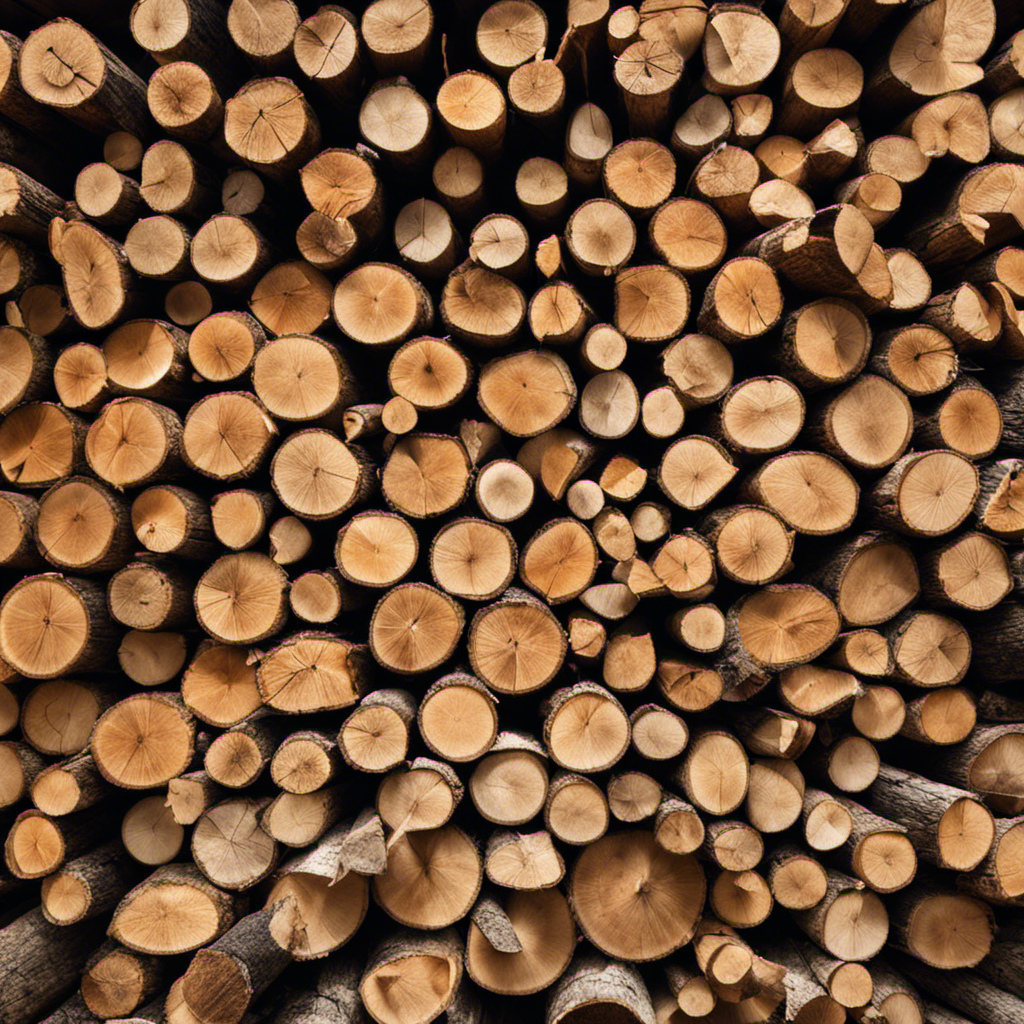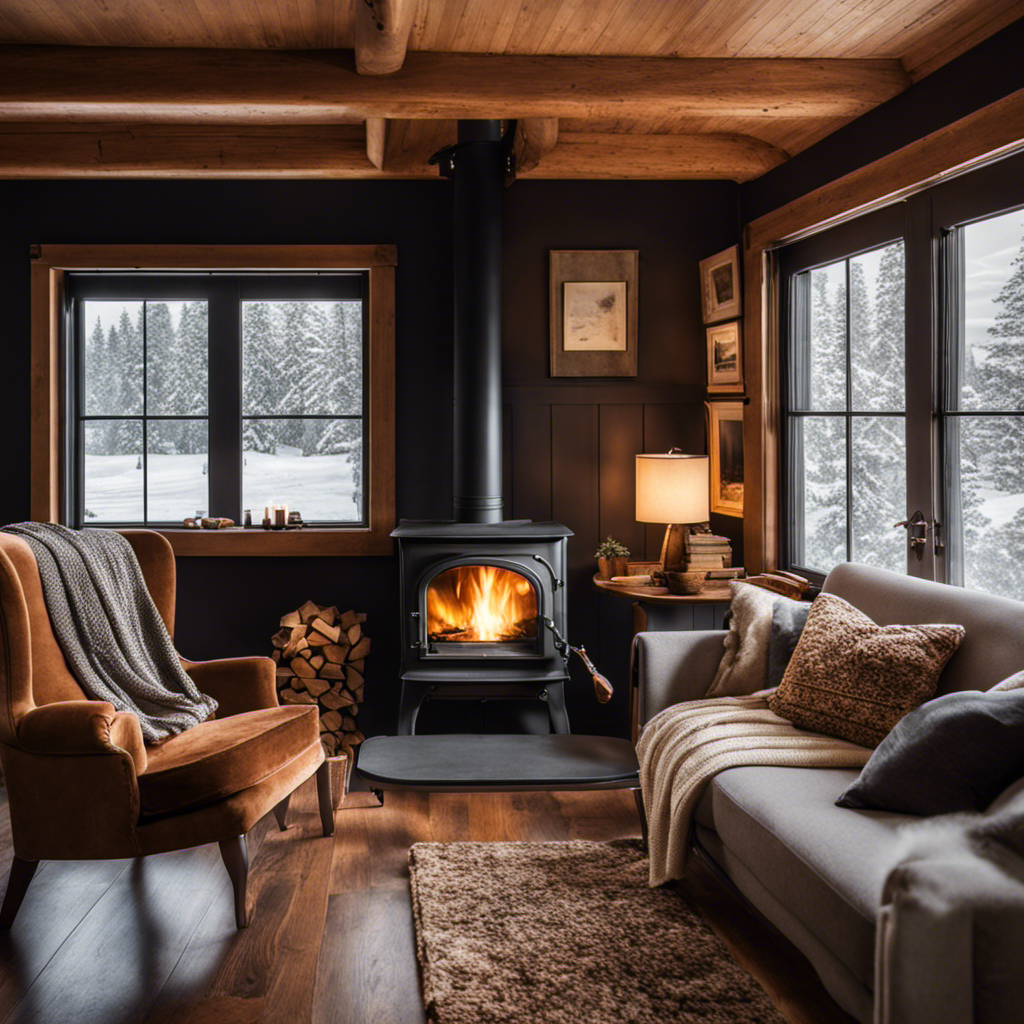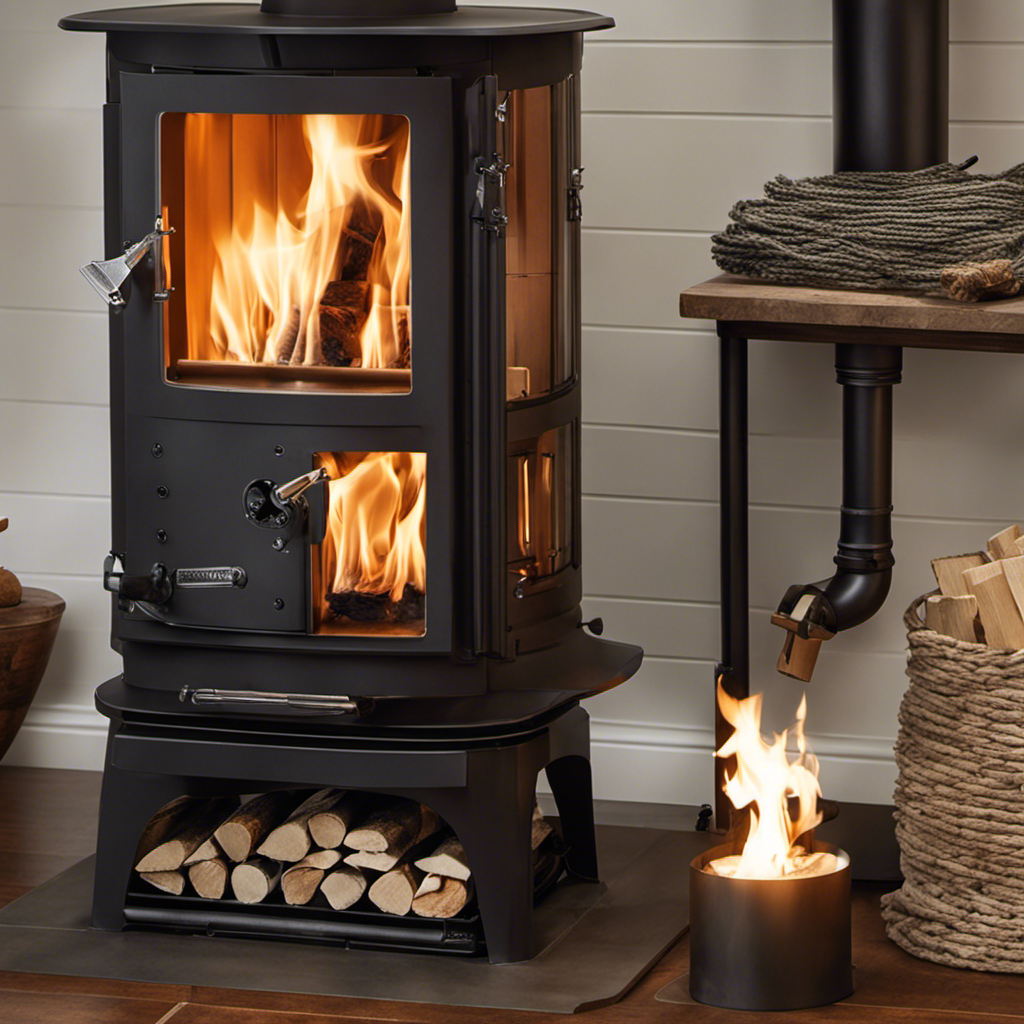As someone passionate about wood-burning stoves, I’ve frequently pondered whether the method used to arrange firewood affects their efficiency in heating. Motivated by this interest, I chose to investigate the effects of various firewood arrangements on heat dispersal, the duration of the fire’s burn, and the stove’s total effectiveness.
In this article, we’ll uncover the importance of proper wood placement and share some tips to maximize efficiency. Get ready to learn how a simple change in wood arrangement can make a world of difference in keeping your home cozy and warm.
Key Takeaways
- Proper wood placement in a wood stove is important for stability and air circulation.
- Using dry and seasoned wood is essential for efficient burning and to avoid excessive smoke.
- Stacking wood in a crisscross pattern and leaving gaps for airflow ensures even heat distribution.
- Strategic wood placement can maximize burn time and heat output in a wood stove.
The Importance of Proper Wood Placement
I always make sure to place the wood in my wood stove properly to ensure efficient burning. The importance of stacking and proper firewood preparation can’t be overstated.
When it comes to stacking firewood, it’s crucial to create a solid base. Start with large pieces of wood that will provide stability. Then, stack smaller pieces on top, making sure to leave enough space between them for air circulation. This allows for better combustion and a hotter fire.
Additionally, it’s essential to properly prepare the firewood by ensuring it’s dry and seasoned. Wet or green wood not only produces less heat but also creates excessive smoke and creosote buildup, which can lead to chimney fires.
Maximizing Efficiency: Tips for Loading Your Wood Stove
To maximize efficiency, load your wood stove carefully and evenly, ensuring that there’s enough space for air circulation.
When it comes to stacking wood, there are a few tips that can help you get the most out of your wood stove.
First, make sure to stack the wood in a crisscross pattern. This allows for better airflow and more efficient combustion.
Additionally, it’s important to use dry and seasoned wood. Wet or green wood will produce more smoke and less heat, reducing the efficiency of your stove.
Lastly, avoid overloading the stove. Too much wood can restrict airflow and prevent proper combustion.
Avoiding Common Mistakes When Putting Wood in a Stove
Stacking wood haphazardly and using damp logs are common mistakes to avoid when putting wood in a stove. Proper stacking is essential for efficient burning and maximizing heat output.
It’s important to arrange the wood in a way that allows for good airflow and even combustion. Start by placing larger logs at the bottom, creating a sturdy base. Then, stack smaller logs and kindling on top, leaving enough space between them for air to circulate.
Avoid overloading the stove, as this can restrict airflow and hinder proper combustion. It’s better to add smaller amounts of wood at regular intervals to maintain a steady heat output.
Additionally, using dry wood is crucial for optimal burning. Wet or damp logs can produce less heat and cause excess smoke.
How Wood Placement Affects Heat Distribution
Properly arranging the wood in the stove can greatly affect its heat distribution and efficiency. When it comes to wood stacking techniques, it’s important to understand how heat circulation patterns work. The way you position the logs can impact how efficiently the stove uses the fuel and how evenly it distributes heat throughout the room.
One key technique is to create a stable base of larger logs at the bottom. These logs should be placed parallel to the front of the stove, allowing air to circulate between them. On top of this base, you can stack smaller logs or split wood in a crisscross pattern. This arrangement promotes better airflow and encourages the fire to burn more efficiently.
Additionally, it’s crucial to leave enough space between the logs to allow for proper combustion. Crowding the wood can restrict airflow and hinder the fire’s ability to burn fully. By leaving gaps, you enable oxygen to reach the flames, resulting in a hotter and more efficient burn.
Understanding the heat circulation patterns in your wood stove can help you optimize its performance. By employing the right wood stacking techniques, you can ensure even heat distribution and maximize the stove’s efficiency.
The Impact of Wood Arrangement on Burn Time and Heat Output
I’ve noticed that by arranging the wood in my stove with larger logs at the bottom and smaller ones on top, I can increase the burn time and heat output. It turns out that wood stacking techniques play a crucial role in optimizing the performance of a wood stove. Here are a few key points to consider:
-
Air Flow: Proper air circulation is essential for efficient combustion. Placing larger logs at the bottom allows for better airflow, ensuring that oxygen can reach the fire and promote complete burning.
-
Heat Distribution: By stacking smaller logs on top, you create a ‘roof’ that helps trap the heat generated by the larger logs below. This arrangement allows for a more sustained and even heat output throughout the burning process.
-
Burn Time: The strategic placement of wood in the stove affects how long the fire will last. The larger logs at the bottom burn slower, providing a solid base of coals that can sustain the smaller logs on top, resulting in a longer burn time.
Frequently Asked Questions
How Often Should I Clean My Wood Stove?
I clean my wood stove at least once a year to keep it in good condition. Some tips for maintaining a clean wood stove include removing ashes regularly, cleaning the flue, and inspecting the door gasket.
Can I Use Any Type of Wood in My Wood Stove?
Yes, it does matter how you put wood in a wood stove. Different types of wood burn at different rates and produce varying amounts of heat. This can affect the efficiency and overall performance of your wood stove.
What Can I Do to Prevent Smoke From Entering My Home When Using a Wood Stove?
To prevent smoke from entering your home when using a wood stove, try these troubleshooting tips: ensure proper air flow, use dry and seasoned wood, and maintain regular chimney cleaning. These steps will improve wood stove efficiency and keep your home smoke-free.
How Long Does It Take for a Wood Stove to Reach Its Optimal Temperature?
To properly light a wood stove, start by using small, dry kindling and placing it in a crisscross pattern. Add larger pieces of wood gradually to maintain a consistent temperature. It’s important to follow these tips for optimal performance.
Is It Necessary to Use a Specific Tool to Arrange the Wood in the Stove?
Yes, it does matter how you arrange wood in a wood stove. There are different ways to do it, and using a specific tool can have pros and cons. Let’s explore the options.
Conclusion
In conclusion, the way you place wood in your wood stove can significantly impact its efficiency and heat distribution. By properly loading your stove and avoiding common mistakes, you can maximize burn time and heat output.
Remember, every piece of wood matters, so take the time to arrange it carefully. So, don’t just throw your wood in haphazardly, treat it like a precious resource and watch your stove perform like a well-oiled machine.
Logan’s affair with adventure began in childhood. He hailed from a small town where vast forests bordered one side and endless shores stretched on the other. His days were spent exploring uncharted woods, climbing tall trees, or listening to the tales of old sailors. This early immersion in a world brimming with stories and mysteries became the foundation of his passion for writing.











